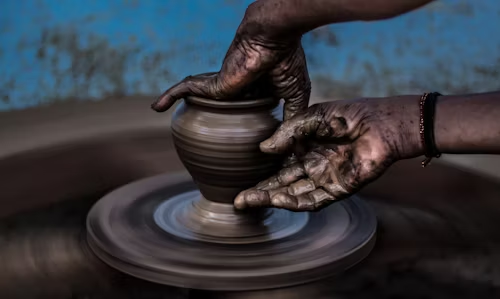In Angola, the work of the artisan remains a living record of the nation’s layered history. From carved masks imbued with spiritual meaning to woven textiles bearing patterns passed down through generations, handcrafted art reflects a deep relationship between people, place, and tradition. These creations are not simply decorative objects; they carry the weight of stories, beliefs, and ancestral memory.
The country’s varied landscapes—from the humid forests of the north to the open grasslands of the south—have long shaped the materials and motifs of its artistic expression. Among Angola’s many ethnic groups, the Ovimbundu, Bakongo, and Chokwe are known for distinctive styles and techniques that mirror their historical roots. A Chokwe mask, for example, may embody an ancestral spirit called upon during ceremonial rites, while Bakongo textiles often feature geometric patterns rich in symbolic meaning.
Wood carving stands among the most celebrated forms. Using native timbers such as mahogany and ebony, craftsmen create works ranging from utilitarian objects to intricate sculptures depicting cultural icons. Many designs incorporate motifs of protection, strength, or unity—visual languages that connect each piece to the natural environment and to shared values within the community.
Art in Angola rarely stands in isolation. Traditional music and dance are often interwoven with visual arts, transforming exhibitions or ceremonies into multisensory performances. Rhythms echo through marketplaces, village gatherings, and national celebrations, carrying with them the narratives of past generations. In such settings, handcrafted works are not static artifacts but active participants in the expression of cultural identity.
Recent years have seen a resurgence of traditional artistry among younger Angolans, many of whom are blending ancestral methods with contemporary aesthetics. This evolution has broadened the audience for Angola’s crafts, placing them in galleries abroad and on global online marketplaces. The result is a body of work that bridges eras—simultaneously preserving heritage and embracing innovation.
The livelihood of many artisans depends on sustaining these traditions. Local markets and artisan cooperatives serve as vital economic anchors, enabling craftspeople to support their families while maintaining cultural practices that might otherwise fade. Each purchase extends beyond a simple transaction; it becomes part of the chain that keeps Angola’s heritage alive.
Through its handcrafted arts, Angola offers a view into its soul—complex, resilient, and deeply rooted in community. The work of its artisans stands as both a testament to the past and a statement of confidence in the future.
Sources:
- Fry, Peter. Art and Culture in Angola: A Historical Overview. Luanda: National Institute of Cultural Heritage, 2020.
- Heywood, Linda M. Contested Power in Angola, 1840s to the Present. University of Rochester Press, 2018.
- “Traditional Crafts and Cultural Expressions in Angola.” Ministry of Culture, Tourism and Environment of Angola, 2023.


